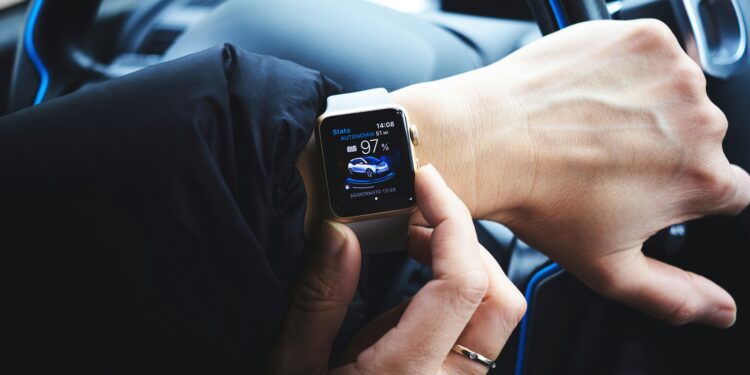A watch that tracks your heart rate is no longer a novelty—it’s a gateway to your future health.
In the last decade, wearable health technology has leapt from niche to necessity. What began with simple pedometers and calorie counters has morphed into a $60 billion global industry capable of monitoring blood pressure, glucose levels, sleep cycles, cardiac arrhythmias, and even stress. Devices like the Apple Watch, Fitbit Sense, and Withings ScanWatch are no longer just tracking fitness—they’re becoming medical companions, offering real-time diagnostics and continuous data collection once reserved for clinical settings.
This evolution represents more than a tech trend. It signals a foundational shift in how healthcare is delivered, monitored, and experienced. With wearable devices increasingly approved by regulatory bodies like the FDA, they now inhabit the intersection of lifestyle, prevention, and clinical medicine.
From Quantified Self to Preventive Power
The early phase of wearable tech focused heavily on the “quantified self”—metrics like steps taken or calories burned. These insights catered to health-conscious consumers but remained largely passive. Today’s devices, by contrast, are proactive.
Smartwatches and biosensors now monitor blood oxygen saturation (SpO2), detect falls, identify atrial fibrillation, and track circadian rhythms with clinical-grade accuracy. For patients with hypertension, continuous blood pressure monitoring provides trends that can be shared directly with providers, improving early detection and disease management.
One of the most transformative frontiers is glucose tracking. Companies like Abbott (with the FreeStyle Libre) and Dexcom have introduced continuous glucose monitors (CGMs) that link with smartphones and wearables. These tools are proving essential not only for people with diabetes, but also for biohackers, athletes, and wellness seekers optimizing diet and metabolism.
Democratizing Data: Empowerment Through Access
The fundamental value of wearables lies in the empowerment they offer. By making personal health data accessible in real-time, users can detect anomalies early, make lifestyle adjustments, and share trends with healthcare providers for more informed treatment plans.
According to a 2023 Deloitte survey, over 50% of wearable device users reported making long-term behavior changes due to feedback from their devices. The same survey found that patients managing chronic conditions were more likely to adhere to medication or care plans when using wearables.
Moreover, platforms like Apple Health and Google Fit are developing increasingly sophisticated dashboards that integrate with EMRs (electronic medical records), allowing clinicians to use patient-generated data during consultations. This marks a significant step in blurring the traditional boundary between the clinic and the home.
Clinical Integration and FDA Oversight
The medicalization of wearable tech has accelerated due to regulatory recognition. In 2018, the Apple Watch received FDA clearance for its ECG function, a landmark moment that opened the door for similar approvals. Since then, dozens of wearable health devices have earned FDA designation as Class II medical devices.
These designations matter: they require rigorous testing, clinical trial validation, and ongoing quality controls. The more wearables gain medical credibility, the more likely insurers, hospital systems, and physicians will incorporate them into care protocols.
Still, integration is not without friction. Issues of data accuracy, privacy, and standardization remain unresolved. Without unified guidelines, the clinical interpretation of wearable data varies widely, and physicians must navigate both liability and information overload.
Challenges: The Digital Divide and Data Dilemmas
As with most innovations, wearables also risk reinforcing disparities. Access to these devices often correlates with socioeconomic status. A $400 smartwatch remains out of reach for many low-income patients, limiting the democratizing potential of health tech.
Data privacy is another pressing concern. Health data collected by wearables is not always protected under HIPAA (Health Insurance Portability and Accountability Act), especially when managed by third-party apps. Transparency about data use, storage, and commercial sale is essential.
Additionally, there is a growing concern about device fatigue. As more functions are crammed into wrist-sized devices, user experience can suffer, and long-term engagement may wane without meaningful support systems.
The Road Ahead: Personalized, Predictive, Preventive
The long-term promise of wearables lies in personalization and prediction. As artificial intelligence and machine learning improve, wearable devices will be able to not only report data but interpret it contextually. This could mean:
- Early warnings for cardiac events before symptoms appear
- Tailored fitness plans based on metabolic response
- Behavioral nudges customized to circadian rhythm and mood
- Alerts for medication adherence and vital sign anomalies
Startups and healthcare systems are already exploring how wearable data can feed into population health models, informing everything from resource allocation to public health response.
Conclusion: A New Chapter in Health Autonomy
Wearable health tech represents more than digital convenience. It is a cultural and clinical evolution, giving individuals unprecedented agency over their own wellness.
As healthcare shifts from reactive to proactive, wearables offer a vital bridge—one that connects real-time personal data with systemic decision-making. But realizing their full potential will require cross-sector collaboration: between tech companies and physicians, regulators and patients, data scientists and ethicists.
The wrist may seem like a small place to start. But for millions, it now carries the pulse of modern medicine.















